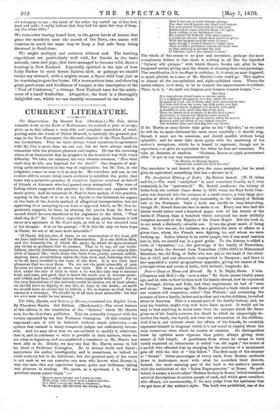The Analytical History of India. By Robert Sewell. (W. H.
Allen and Co.)—The word "analytical" is used somewhat loosely, as it very commonly is, for "epitomized." Mr. Sewell condenses the history of India from the earliest times down to 1858, when the East India Com- pany was deposed, into the compass of a small octavo, a very large pro- portion of which is devoted, very reasonably, to the history of British rule in the Peninsula. Such a book can hardly be very interesting, though Mr. Sewell does his best to make it so. Every one who had the choice would rather read a hundred pages with all the details of the battle of Plessey, than a hundred which contained the most skilfully complete account of the Empire of the Greet Mogul. But the book is to our mind, a distinctly valuable one. It has the great merit of being clear. It lets one see, for instance, at a glance the state of affairs at a given time, whom the French were fighting for, and whom we were backing up. Indian history is an awful jungle, but if one must venture into it, this, we should say, is a good guide. To the history is added a table of "dynasties," e.g., the genealogy of the family of Tamerlane, tracing down the descent from Tamerlane (1336-1405) to Mohammed Bahadoor, the old King of Delhi who was put at the head of the rebel- lion in 1857, and was afterwards transported to Rangoon ; and there is. also appended a useful geographical appendix, giving the names of the principal cities and towns of India, with latitude, longitude, etc.






























 Previous page
Previous page